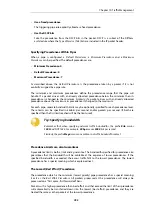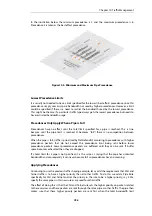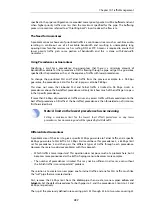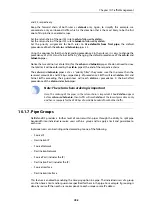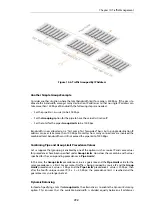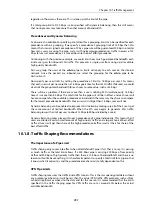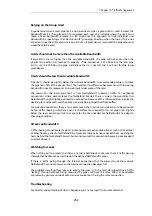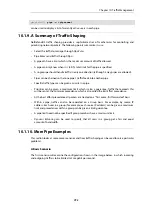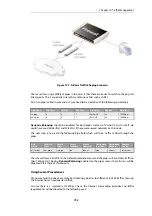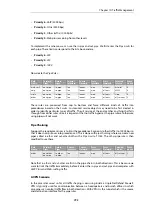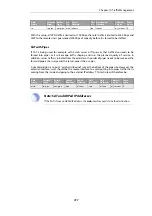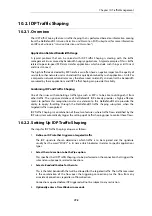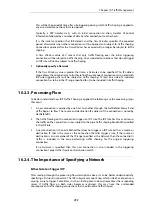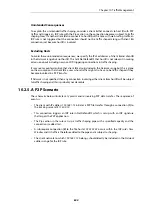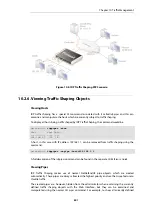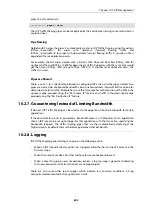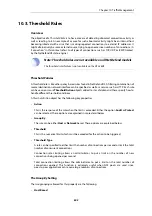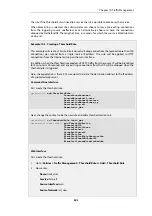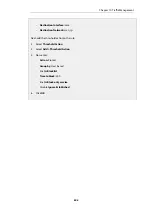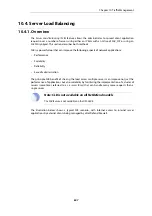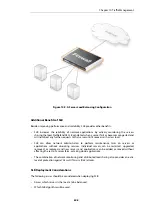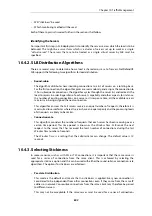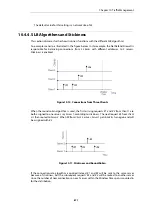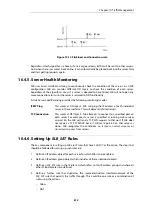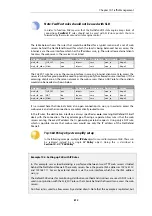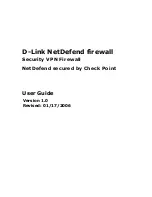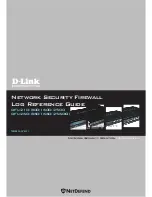
10.2. IDP Traffic Shaping
10.2.1. Overview
The
IDP Traffic Shaping
feature is traffic shaping that is performed based on information coming
from the NetDefendOS
Intrusion Detection and Prevention
(IDP) subsystem (for more information
on IDP see
Section 6.6, “Intrusion Detection and Prevention”
).
Application Related Bandwidth Usage
A typical problem that can be solved with IDP Traffic Shaping is dealing with the traffic
management issues caused by bandwidth hungry applications. A typical example of this is traffic
related to peer-to-peer (P2P) data transfer applications which include such things as
Bit Torrent
and
Direct Connect
.
The high traffic loads created by P2P transfers can often have a negative impact on the quality of
service for other network users as bandwidth is quickly absorbed by such applications. An ISP or
a corporate network administrator may therefore need to identify and control the bandwidth
consumed by these applications and IDP Traffic Shaping can provide this ability.
Combining IDP and Traffic Shaping
One of the issues with controlling a traffic type such as P2P is to be able to distinguish it from
other traffic. The signature database of NetDefendOS IDP already provides a highly effective
means to perform this recognition and as an extension to this, NetDefendOS also provides the
ability to apply throttling through the NetDefendOS traffic shaping subsystem when the
targeted traffic is recognized.
IDP Traffic Shaping is a combination of these two features, where traffic flows identified by the
IDP subsystem automatically trigger the setting up of traffic shaping pipes to control those flows.
10.2.2. Setting Up IDP Traffic Shaping
The steps for IDP Traffic Shaping setup are as follows:
1.
Define an IDP rule that triggers on targeted traffic.
The IDP signature chosen determines which traffic is to be targeted and the signature
usually has the word "
POLICY
" in its name which indicates it relates to specific applications
types.
2.
Select the rule's action to be the Pipe option.
This specifies that IDP Traffic Shaping is to be performed on the connection that triggers the
rule and on subsequent, related connections.
3.
Select a Bandwidth value for the rule.
This is the total bandwidth that will be allowed for the targeted traffic. The traffic measured
is the combination of the flow over the triggering connection plus the flow from any
associated connections, regardless of flow direction.
Connections opened before IDP triggered will not be subject to any restriction.
4.
Optionally enter a Time Window in seconds.
Chapter 10: Traffic Management
798
Summary of Contents for NetDefendOS
Page 30: ...Figure 1 3 Packet Flow Schematic Part III Chapter 1 NetDefendOS Overview 30 ...
Page 32: ...Chapter 1 NetDefendOS Overview 32 ...
Page 144: ...Chapter 2 Management and Maintenance 144 ...
Page 284: ...Chapter 3 Fundamentals 284 ...
Page 392: ...Chapter 4 Routing 392 ...
Page 419: ... Host 2001 DB8 1 MAC 00 90 12 13 14 15 5 Click OK Chapter 5 DHCP Services 419 ...
Page 420: ...Chapter 5 DHCP Services 420 ...
Page 573: ...Chapter 6 Security Mechanisms 573 ...
Page 607: ...Chapter 7 Address Translation 607 ...
Page 666: ...Chapter 8 User Authentication 666 ...
Page 775: ...Chapter 9 VPN 775 ...
Page 819: ...Chapter 10 Traffic Management 819 ...
Page 842: ...Chapter 11 High Availability 842 ...
Page 866: ...Default Enabled Chapter 13 Advanced Settings 866 ...
Page 879: ...Chapter 13 Advanced Settings 879 ...


